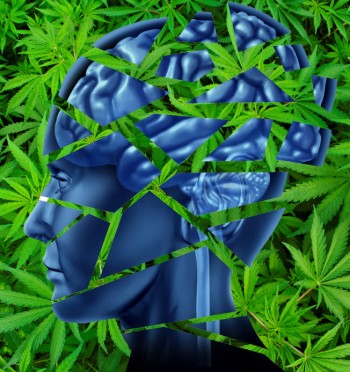
Cannabis and Deep Meditation: The Ancient Partnership Reborn
As I sink into my meditation cushion after a carefully measured dose of cannabis, I notice something extraordinary happening. The usual chatter of my mind begins to recede like waves pulling back from the shore. My awareness expands, and suddenly the boundary between observer and observed feels less rigid. This isn't just a pleasant relaxation—it's a doorway to deeper states of consciousness that humans have been exploring for millennia.
The relationship between cannabis and meditation isn't new. Ancient traditions from Hindu Sadhus to Rastafarians have long recognized cannabis as a potential tool for spiritual practice. What's changing is our scientific understanding of how and why this combination can be so powerful when approached with intention and respect.
"The discovery of the endocannabinoid system has revolutionized our understanding of the brain's inner workings," explains Dr. Ethan Russo, neurologist and cannabis researcher. "This system doesn't just respond to plant cannabinoids—it's fundamentally involved in regulating states of consciousness, including meditative states."
But this partnership is delicate. Too little cannabis might not shift your consciousness sufficiently to break habitual thought patterns. Too much can send your mind racing in exactly the opposite direction of meditation's stillness. Finding that sweet spot—the dosage and method that enhances rather than detracts from your practice—is both an art and a science.
In this exploration, we'll examine the neurological underpinnings of cannabis-assisted meditation, practical approaches to combining these practices effectively, and how techniques like sensory deprivation and breathwork can be enhanced with mindful cannabis use. Whether you're a seasoned meditator curious about cannabis or a cannabis enthusiast looking to deepen your practice, this marriage of ancient wisdom and modern understanding offers fascinating possibilities for inner exploration.
The Science of Cannabis and Meditation
To understand why cannabis can enhance meditation, we need to examine what happens in the brain during both experiences. During meditation, neuroimaging studies show decreased activity in the default mode network (DMN)—the brain system responsible for self-referential thinking and mind-wandering. As experienced meditators reach deeper states, the DMN quiets down, allowing for heightened present-moment awareness and reduced self-preoccupation.
"When we meditate, we're essentially training attention and awareness to achieve mental clarity and emotional calm," explains Dr. Sara Lazar, neuroscientist at Harvard Medical School. "Long-term meditators show structural changes in regions of the brain associated with attention, sensory processing, and self-awareness."
Cannabis affects many of these same systems through its interaction with the endocannabinoid system (ECS). The ECS maintains homeostasis throughout the body and plays crucial roles in regulating mood, memory, pain perception, and consciousness itself.
THC, the primary psychoactive compound in cannabis, binds to CB1 receptors heavily concentrated in brain regions involved in attention allocation and sensory processing. At moderate doses, this binding can help disrupt rigid thought patterns and enhance sensory awareness—two states conducive to meditation.
CBD, another prominent cannabinoid, appears to moderate anxiety by affecting serotonin receptors and may counterbalance some of THC's potentially distracting effects. As Dr. Dustin Sulak, osteopathic physician and cannabis expert, notes: "CBD can mitigate the anxiety sometimes caused by THC, making the combination potentially more suitable for meditative states than THC alone."
A 2019 study published in the Journal of Psychopharmacology found that low to moderate doses of cannabis increased frontal alpha wave activity—brain waves associated with relaxed alertness and present-moment awareness. These are precisely the brain states many meditation traditions aim to cultivate.
Interestingly, research by Johns Hopkins University has shown that both meditation and cannabis influence similar neurotransmitter systems, particularly GABA (gamma-aminobutyric acid), which inhibits neural activity. Increased GABA levels promote the mental quieting essential for deep meditation states.
However, the science comes with important caveats. Higher doses of THC can significantly increase heart rate, potentially making it difficult to maintain the physical stillness conducive to meditation. Excessive THC can also induce anxiety or racing thoughts in some individuals—states antithetical to meditative calm.
"Cannabis affects individuals differently based on their unique endocannabinoid tone, metabolism, and sensitivity," explains Dr. Sulak. "What works as a meditation aid for one person may be disruptive for another."
This variability underscores the importance of personalized approaches. As with meditation itself, cannabis-enhanced practice requires self-experimentation and mindful attention to find what researchers call the "minimum effective dose"—the smallest amount needed to positively influence your meditation experience without unwanted side effects.
Finding Your Perfect Dose and Method
The difference between cannabis enhancing or hindering meditation often comes down to dosage and delivery method. This isn't just anecdotal wisdom—it's supported by the biphasic effect observed in cannabis research, where low to moderate doses produce different and sometimes opposite effects compared to high doses.
Dr. Russo explains: "At lower doses, cannabis tends to reduce anxiety and promote alertness, while higher doses can increase anxiety and sedation in many individuals. This biphasic response is crucial to understand when using cannabis for specific purposes like meditation."
For meditation purposes, microdosing—consuming sub-perceptual or very low doses—may provide cognitive benefits without overwhelming psychoactivity. A 2020 study in the Journal of Psychedelic Studies found that cannabis microdosing improved convergent and divergent thinking without significantly altering consciousness—potentially ideal for meditation that requires focused awareness.
Based on both scientific research and experienced practitioners' reports, here are guidelines for finding your optimal approach:
1. Start with CBD-dominant products For meditation beginners or those sensitive to THC, starting with CBD-dominant formulations (10:1 or higher CBD
ratios) can provide subtle effects without disruptive psychoactivity. CBD's anti-anxiety properties may help ease into meditative states.
2. Consider timing and onset Inhalation methods produce effects within minutes but last 1-3 hours—suitable for shorter meditation sessions. Edibles take 30-90 minutes to begin working but provide 4-8 hours of effects, making them better matched to longer retreats or practices.
As meditation teacher and cannabis advocate Jason Averbuch notes: "Timing your cannabis consumption to align with your meditation is crucial. I find that consuming about 20-30 minutes before a session allows the initial stimulation to subside, transitioning into a more centered state ideal for practice."
3. Establish baseline sensitivity Before combining cannabis with meditation, understand your baseline sensitivity. As Dr. Sulak recommends in his sensitization protocol: "Begin with 1mg THC and increase by 1mg every few days until finding your minimal effective dose—the smallest amount that produces desired effects."
4. Consider terpene profiles Cannabis contains aromatic compounds called terpenes that influence its effects. Varieties high in myrcene and linalool tend to promote relaxation, while pinene may enhance mental clarity—both potentially beneficial for different meditation styles.
5. Document your experiences Keep a journal noting cannabis variety, dosage, consumption method, and effects on your meditation. This systematic approach helps identify patterns and refine your practice.
A mindful approach to dosing transforms cannabis from a potential distraction into a sophisticated tool for consciousness exploration. By finding your personal sweet spot—where awareness is enhanced without overwhelming mental activity—you create optimal conditions for deep meditation states.
Advanced Techniques: Sensory Deprivation and Breathwork
For those seeking profound meditation experiences with cannabis, combining it with sensory deprivation or systematic breathwork can produce remarkable results. These techniques leverage cannabis's ability to enhance sensory awareness and body connection while using specific environments or breathing patterns to direct that awareness inward.
Sensory Deprivation Tanks
Flotation tanks—lightless, soundproof chambers containing body-temperature salt water—provide an environment where external stimuli are minimized, allowing consciousness to turn inward. When combined with cannabis, this experience can be transformed.
Research from the Laureate Institute for Brain Research has shown that floating alone reduces activity in the brain's arousal systems and increases theta wave activity associated with deep meditation. Cannabis can potentially deepen this effect.
"The combination of sensory deprivation and cannabis creates a unique synergy," explains Dr. Justin Feinstein, neuropsychologist and flotation researcher. "The tank removes external distractions while cannabis helps quiet the internal distractions—the ruminating thoughts that often prevent deeper meditative states."
For optimal results with this combination:
- Choose lower THC doses (2-5mg for most individuals) to avoid anxiety in the enclosed environment
- Select CBD-balanced products that promote relaxation without disorientation
- Consume 30-60 minutes before floating to align peak effects with your float session
- Focus on breathwork during the initial adjustment period in the tank
Many experienced practitioners report that this combination facilitates what psychologist Mihaly Csikszentmihalyi termed "flow states"—experiences of complete absorption where sense of self temporarily dissolves and awareness expands significantly.
Breathwork
Systematic breathing techniques from traditions like pranayama yoga, Holotropic Breathwork, and Wim Hof Method powerfully alter consciousness on their own. Combined with mindful cannabis use, these practices can access extraordinary depths.
Dr. James Fadiman, microdosing researcher and psychologist, explains: "Breathwork alters carbon dioxide and oxygen ratios in the bloodstream, changing brain chemistry and consciousness. Cannabis affects many of the same systems through different mechanisms. Together, they can create state changes difficult to achieve otherwise."
Cannabis specifically enhances breathwork through several mechanisms:
- Bronchodilation (opening of airways), allowing deeper breathing
- Increased sensitivity to interoceptive awareness (internal body sensations)
- Reduced resistance to emotional releases that often accompany deep breathwork
- Enhanced focus on breathing rhythms
Wim Hof, creator of the eponymous breathing method, doesn't explicitly endorse cannabis combination but acknowledges: "The ability to surrender to the breath is essential. Anything that helps you let go of resistance and fully commit to the breathing process can be beneficial."
For effective cannabis-enhanced breathwork:
- Choose lower doses (1-3mg THC) for clarity with subtle consciousness change
- Practice in a comfortable, safe environment with no responsibilities afterward
- Begin breathing techniques as cannabis effects emerge
- Have clear intentions for your practice
- Consider recording guided instructions to follow during your session
The Sticky Bottom Line
Cannabis and meditation represent a partnership thousands of years in the making, now validated by modern neuroscience. When approached with intention, knowledge, and respect, this combination offers unique opportunities to explore consciousness that neither practice might fully provide alone.
As Dr. Sulak wisely cautions: "Cannabis is not a shortcut to enlightenment, but for some individuals, it can be a valuable ally in navigating the inner landscape."
The key to success lies in personalization. Your ideal approach depends on your unique neurochemistry, cannabis sensitivity, meditation experience, and intentions. Through mindful experimentation and honest self-observation, you can discover whether cannabis serves your meditation practice and exactly how to implement it for optimal results.
Remember that the goal isn't to become dependent on cannabis for meditation, but rather to use it intentionally as a tool for deepening your practice. Many practitioners find that cannabis occasionally helps them access states they can later reach without it—serving as a teacher rather than a crutch.
If you choose to explore this ancient partnership, do so with clear intentions and careful attention to set and setting. Start with minimal doses, maintain a regular meditation practice with and without cannabis, and approach the experience with curiosity rather than expectation.
As Ram Dass, spiritual teacher who openly discussed his psychedelic experiences, once said: "The spiritual journey is not about acquiring something outside yourself. Rather, you are peeling back the layers of illusion that prevent you from knowing your true nature." Whether cannabis assists in that peeling process is something only you can discover through direct experience.
The wisdom of your own body and mind remains the ultimate guide—listen closely, proceed mindfully, and honor the practices that truly serve your evolution of consciousness.
CANNABIS AND MEDITATION, READ ON...
CANNABIS AND MEDIATION, THE BEGINNERS GUIDE TO HOW TO DO IT!






